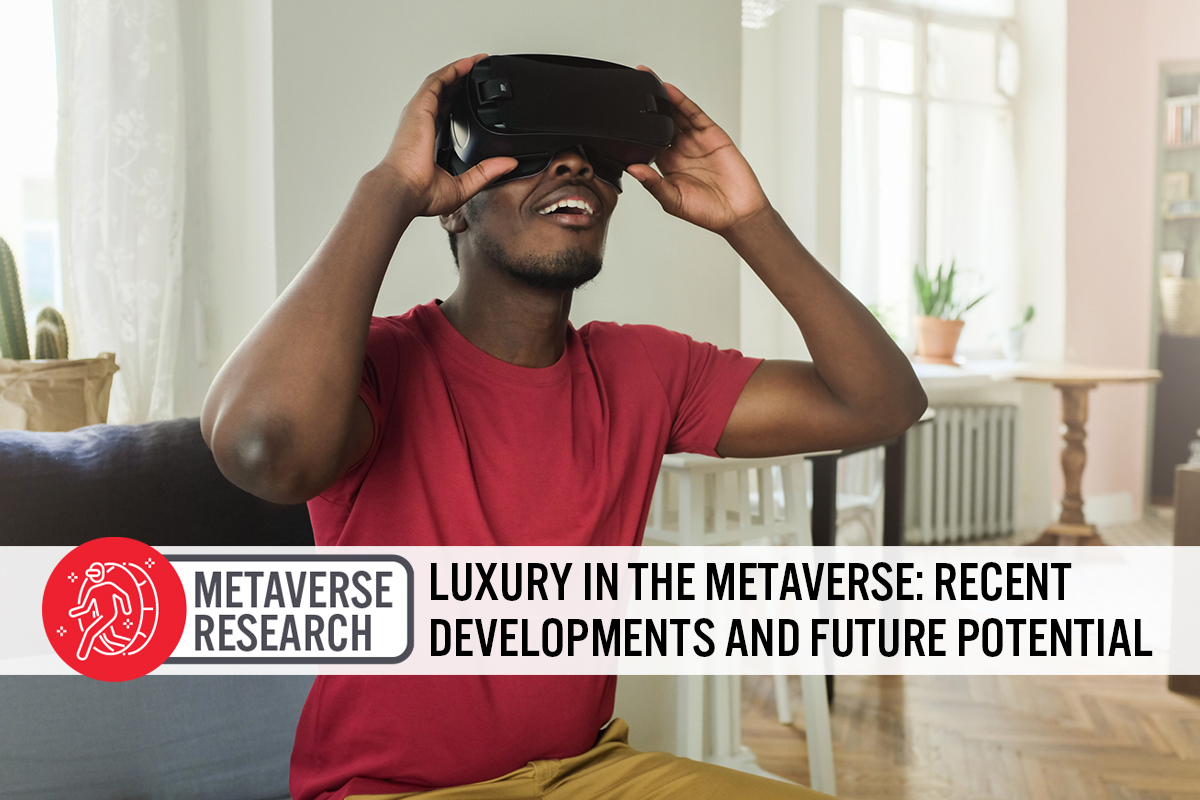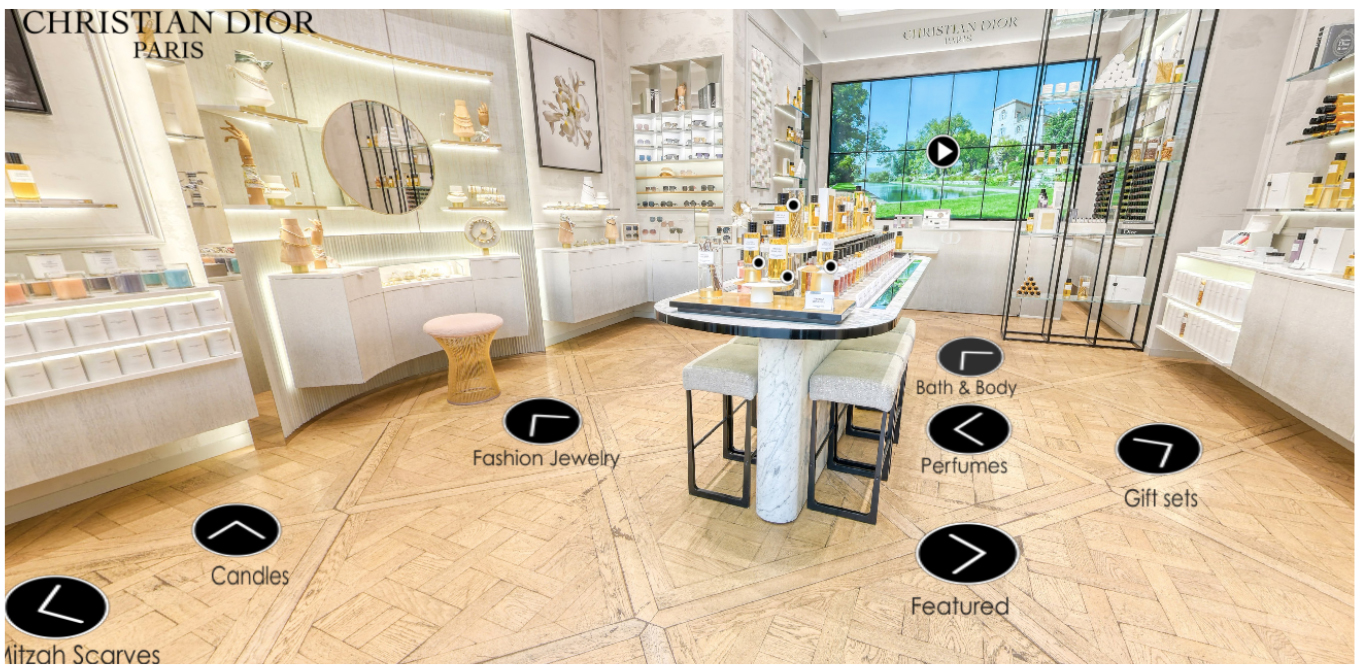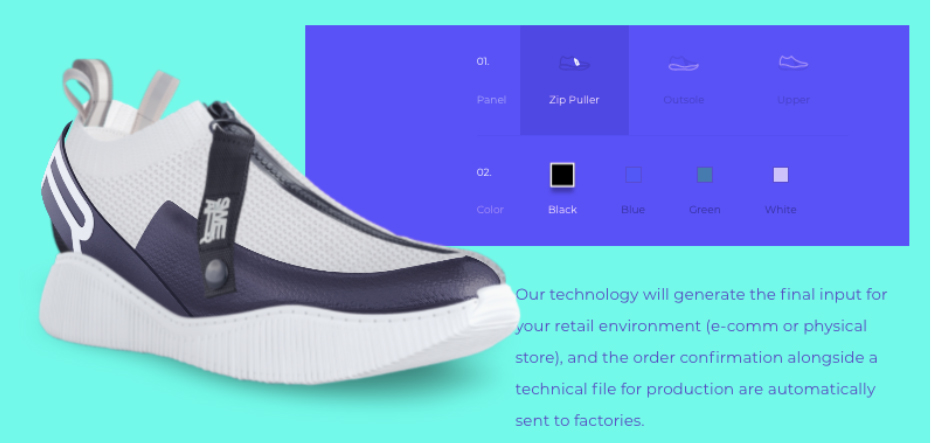
DIpil Das
Introduction
What’s the Story?
Advances in technology, its growing ubiquity and affordability, and consumers’ increasing knowledge and adoption of technology, have led to the development of the metaverse—a virtual world in which humans can interact with each other as well as the digital environment. Within these virtual worlds, users can wear digital clothing or makeup, travel to virtual locations or trade with non-fungible tokens (NFTs). Coresight Research has identified the expanding metaverse as a key trend to watch in retail in 2022 and beyond. Unlike luxury’s slow adoption of e-commerce, it became involved in the metaverse early on compared to other sectors. We analyze the role of luxury in the metaverse and present notable developments in the space by major luxury brands and retailers. We also present our expectations for the future of luxury in the metaverse.Why It Matters
The confluence of various technologies—including augmented, virtual and mixed realities (AR, VR and MR, collectively known as extended reality), blockchain, cryptocurrency, artificial intelligence (AI) and gaming—forms the collective metaverse. Users’ interaction with the virtual environment requires the involvement of various other services, platforms and sectors, such as digital design and fintech. Each of these technologies and sectors on their own are sizeable and burgeoning, and the metaverse is capturing greater attention among consumers and businesses alike. We therefore believe that the metaverse is set for tremendous growth and that luxury’s role will grow increasingly prominent. While luxury companies have already experimented with the metaverse as a marketing tool, we expect that they will increasingly look to offer products for use in the virtual world, such as digital clothing for games and NFTs.- Read more Coresight Research coverage of the metaverse.
Luxury in the Metaverse: Coresight Research Analysis
Luxury’s Early Involvement in the Metaverse and Recent Developments Fashion and luxury had early involvement in the metaverse. One of the first digital fashion collections was unveiled in 2018 by Scandinavian retailer Carlings, which featured 3D clothing that could be overlaid on anybody. Gucci auctioned the first luxury NFT in June 2021, a fashion film inspired by its Aria collection, for which the starting bid was $20,000. Amid the Covid-19 pandemic, with travel at a standstill and social interactions limited, luxury brands such as Balenciaga and Gucci introduced shoppable AR features on social media platform Snapchat, unveiled digital fashion shows and even dropped new collections via video games. If there were to be a luxury metaverse leaderboard based on developments so far, we think that Kering would top the list, due to its digital innovations through the Alexander McQueen, Balenciaga and Gucci brands.- Alexander McQueen
- Balenciaga
 A street and forest environment and digital avatars showcasing Balenciaga’s Fall collection in Afterworld: The Age of Tomorrow
A street and forest environment and digital avatars showcasing Balenciaga’s Fall collection in Afterworld: The Age of Tomorrow Source: Balenciaga [/caption]
- Burberry
- Gucci
 Landscape elements of the virtual Gucci Garden on video game Roblox
Landscape elements of the virtual Gucci Garden on video game Roblox Source: Roblox [/caption] We present a timeline of key developments in the metaverse from luxury brands and retailers over the past three years.
Figure 1. The Luxury Metaverse: A Timeline of Key Developments [wpdatatable id=1766]
Source: Company reports/Coresight Research The Next Step: Offering a Mix of Virtual and Physical Products Typically, digital items launched by luxury brands are available for users to enjoy in a virtual world only. For example, Gucci’s products on the Animal Crossing game could be used only within that game. However, brands have been increasingly offering virtual items along with products available in the real world. For example, as we outlined in the previous section, Balenciaga’s collection in collaboration with Fortnite includes digital clothing for the game’s avatars as well as limited-edition physical clothing featuring the game’s logo. [caption id="attachment_142328" align="aligncenter" width="700"]
 Digital clothing that users can buy on Fortnite (left) and a few physical items of clothing from the collection that shoppers can buy (right)
Digital clothing that users can buy on Fortnite (left) and a few physical items of clothing from the collection that shoppers can buy (right) Source: Epic Games/Balenciaga [/caption] In November 2021, Burberry unveiled a limited-edition scarf (1,000 pieces) for the Singles’ Day shopping festival in China. Chinese e-commerce platform Alibaba featured the product in its Tmall platform’s Double 11 Metaverse Art Exhibition. Each of the pieces had its own unique identifier and users that bought the NFT could access it through the Alipay mini program and also receive a physical version of the scarf. Gucci’s offer of real ceramic objects along with its NFTs in collaboration with Superplastic is another example of the intermingling of the real and virtual worlds. We expect to see luxury brands launch more virtual fashion collections that also allow shoppers to own physical versions of the products—enabling brands to boost sales and increase their exposure and engagement across both the online and offline channels. Considerations for Luxury Brands and Retailers in Entering the Metaverse Advantages
- Digital assets are less expensive and less time-intensive to produce than physical items. Digital clothing, for example, can be easily resized to fit a variety of body sizes and types, and redesigned to suit personal tastes within minutes; physical clothing can take days to construct, and revisions to physical garments is time-consuming and expensive.
- Digital clothing and other virtual objects are more environmentally friendly as they do not create waste.
- There is greater flexibility for movement of objects across virtual geographies. Users do not have to be physically close to stores and shipping of purchases is not necessary.
- NFTs provide a layer of anonymity to the owners, and they can be coded such that the original creator can be paid royalties each time the NFT is sold. Additionally, NFTs offer a secure means to exercise ownership over virtual products, so when they are sold, their authenticity can be validated—unlike a virtual product that is not an NFT, which can be forged or duplicated. Not all products sold in the metaverse, including luxury products, are NFTs.
- The ubiquity of smartphones enables flexibility in payment, access and sales of virtual luxury anywhere, at any time.
- Scalability: While creating some digital assets is easier or quicker than creating the real versions, developing a functioning virtual ecosystem can take time.
- Health implications: Prolonged isolation during the pandemic has brought several physical and mental health issues to the fore, and engaging for long periods in a virtual world could trigger such health issues.
- Risk of losing contact with brands: Engaging with brands purely through a virtual environment can create a different brand experience for the user compared to a real-world brand experience.
- Maintaining exclusivity: Luxury brands thrive on their exclusivity, but recreating a luxury experience that is unique to each brand may be challenging. For example, brands across sectors can use the same virtual try-on technologies. However, being able to try on luxury items in a virtual space may encourage aspirational luxury shoppers to buy real-world items.
- Cappasity
- Obsess
 Christian Dior’s “Dior Maison” virtual boutique
Christian Dior’s “Dior Maison” virtual boutique Source: Dior.com [/caption]
- Platforme
 An example of customization options for a pair of shoes, generated through the Platforme application
An example of customization options for a pair of shoes, generated through the Platforme application Source: Platforme [/caption] The metaverse will also help luxury companies tap new markets, such as the youthful, highly digitally engaged, affluent consumer segment that does not typically shop in stores. For consumers that value digital engagement and virtual assets, the metaverse will be an important avenue for luxury companies to reach them.
What We Think
Companies that are willing to adapt, such as Kering and LVMH, are likely to continue to be leaders in the metaverse. Those late to the game are risking being left behind, such as Chanel, which is yet to even have a strong e-commerce presence. Luxury brands will need to set aside considerable investments to build out their virtual brand worlds, including the infrastructure and talent to support their presence in the metaverse, and continue to do research and development. Although the revenues from virtual sales may seem inconsequential initially when compared to a company’s overall revenues, brands and retailers that begin building their metaverse presence now will realize benefits in the long run when a global luxury metaverse is well established. The metaverse presents opportunities for marketing and brand building: Luxury brands that experiment and invest in the space can position themselves as progressive and being at the edge of new trends. Just as building out physical infrastructure is a gradual process, building out digital assets and infrastructure is also a gradual process—so first-movers have the advantage of laying down a foundation early on to build out a large, substantial presence in time. Implications for Brands/Retailers- Extended-reality and 3D technologies allow brands and retailers to replicate real environments, and provide shoppers with immersive and engaging content and exclusive experiences. NFTs allow consumers to own unique, digital assets that can gain value in time.
- Brands and retailers could look to leverage a combination of new technologies and ready-to-deploy applications—developing technologies in-house requires vast amounts of data, a considerable amount of time to create and test, and significant investment in hardware and personnel. While leveraging the technical knowhow of third-party firms for initial projects, luxury brands and retailers should begin establishing a core team that concentrates exclusively on the metaverse. Just as e-commerce and digital interfaces transitioned from “nice-to-have” to “must-have” features, companies need to plan to make the metaverse central to their digital strategies.
- As some luxury events continue to be digital, technology vendors should provide applications and platforms that are convenient to deploy but also deliver the exclusivity that luxury brands represent.
- Being able to provide white-label applications that can easily take on luxury firms’ branding will appeal to companies seeking convenience while maintaining exclusivity.